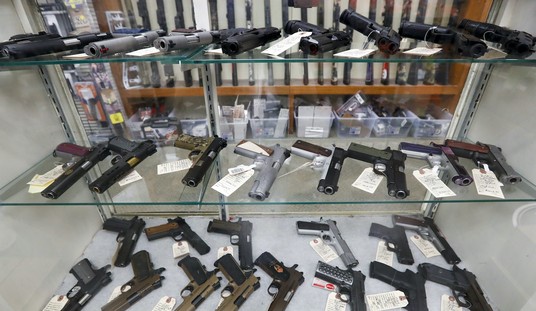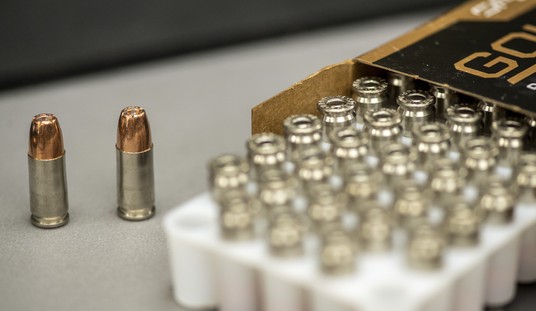How often should “red flag” laws be used? For most of the readers of Bearing Arms, the answer is “zero”, but it might surprise you to learn that even supporters of Extreme Risk Protection Orders can’t say just how frequently they should be initiated… though several told the Associated Press that they’re not being used enough.
According to an AP analysis, however, “red flag” laws have been deployed more than 15,000 times in 19 states and the District of Columbia since 2020; a rate that translates to about 1 ERPO for every 10,000 people. That seems like a lot to me, especially since these measures are typically billed as a tool to be deployed in only the most dire of circumstances when a gun owner has been deemed to be a danger to themselves or others. But to the “experts” the AP spoke to, the number of gun seizures should be much higher.
Experts called that woefully low and not nearly enough to make a dent in gun violence, considering the millions of firearms in circulation and countless potential warning signs law enforcement officers encounter from gun owners every day.
“It’s too small a pebble to make a ripple,” Duke University psychologist Jeffrey Swanson, who has studied red flag gun surrender orders across the nation, said of the numbers the AP tally shows. “It’s as if the law doesn’t exist.”
“The number of people we are catching with red flags is likely infinitesimal,” added Indiana University law professor Jody Madeira, who like other experts who reviewed AP’s findings wouldn’t speculate how many red flag removal orders would be necessary to make a difference.
A couple of points here. First, the fact that the concern is centered around the “millions of firearms in circulation” and not the number of supposedly dangerous individuals is a red flag all on its own. As we’ve pointed out here before, “red flag” laws have nothing to do with mental health; in the vast majority of states with ERPO laws on the books mental health professionals have no say in determining whether or not someone poses a danger to themselves or others, but instead the decision is left up to a judge. And I’m not aware of any red flag law that offers mental health treatment for those determined to be dangerous. The law simply allows for any guns they own to be removed from their possession, but does nothing to treat the underlying “dangerousness” of the subject of the red flag petition.
And if these academics can determine that the current numbers are too low, why can’t they pin down the “right” number of red flag gun seizures? And who’s to say that the figures are too low to begin with? Based on the AP report, it sounds like the only evidence the so-called experts can point to is that violent crime, homicides, and suicides have continued to climb in many states with ERPO laws on the books. But that’s not evidence that the law is being underused. It could also be a sign that the law suffers from some fundamental flaws, which make them both less likely to be used by some law enforcement agencies and not very effective at preventing truly dangerous people from doing dangerous things.
Several experts said it’s impossible to come up with an ideal number of red flag orders and it’s misleading to compare states by orders because of the widely varying rates of gun ownership and gun homicides and suicides, among other stats.
Another complicating factor is that some states have stricter gun ownerships rules and multiple ways to seize firearms. In California, for instance, guns can be taken away through domestic violence restraining orders, civil harassment protection orders and school violence prevention orders in addition to the red flag law.
Still, experts consulted by AP agreed more could be done to enforce red flag laws given the prevalence of guns and the millions of gun owners that national studies suggest could be dangerous to themselves and others. In red flag states alone, figures compiled by the Gun Violence Archive show at least 21,100 homicides and 47,000 injuries during the 2½ years covered by AP’s count.
Several studies suggest red flag laws can be particularly effective in preventing gun suicides, which kill about 20,000 people a year. A Duke University study of Connecticut’s-first-in-the-nation red flag law in 1999 estimated that for every 10 to 20 surrender orders, a life from a potential suicide was saved. A study of Indiana’s law came up with a similar ratio.
Let’s say these numbers are accurate. While it’s great that one out of every 10-to-20 people subject to a red flag order doesn’t commit suicide, what about the other 9-to-19 people who were red-flagged? How many of them took their own life after having their guns removed, and how many of them weren’t actually a danger to themselves or others to begin with?
My objections to “red flag” laws aren’t just based on the lack of due process afforded to those who are the subject of these petitions, though that’s definitely a real concern. I think they’re also a dodge that allows politicians to say they’re “doing something” without having to address the underlying problems in our mental health systems across the country.
Despite the fact that the Safer Communities Act signed into law earlier this summer offers grants to states to implement Extreme Risk Protection Order laws, we haven’t seen any state move to put new red flag laws in place in the months since, and that’s a good thing. If we’re going to seriously address those individuals who are a legitimate danger to themselves or others, it won’t be through constitutionally suspect gun control laws that masquerade as mental health measures, but by ensuring that individuals in crisis get the help they need to live to see another day.









Join the conversation as a VIP Member